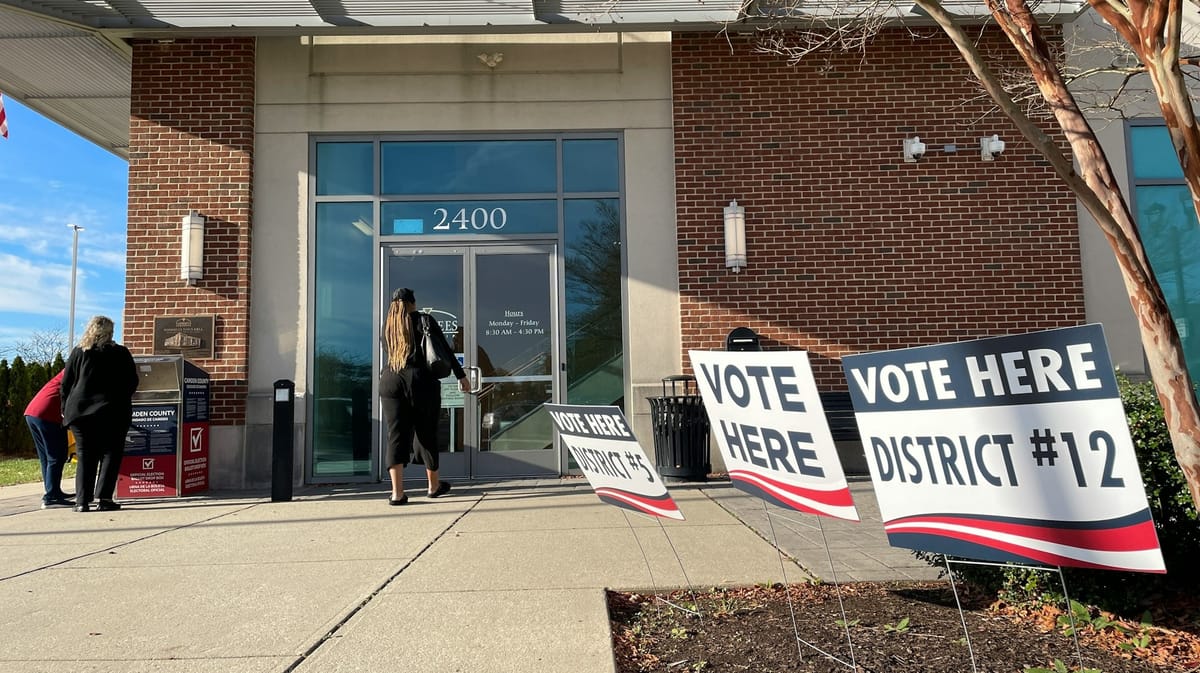US DOJ Investigates Guard at Polling Sites; Military Deploys Carrier to South America; Congress Faces Shutdown; Louisiana Redistricting Reviewed

TL;DR
- US DOJ Investigates Trump Administration's Deployment of National Guard to Polling Sites Amid 2026 Midterm Concerns.
- Ninth Circuit Revokes Temporary Restraining Order Limiting Trump Administration’s Use of State National Guard Troops in Oregon.
- US Military Deploys USS Gerald R. Ford Carrier Group to South America to Counter Venezuelan Drug Cartels.
- U.S. Congress Holds Sessions to Discuss Legislative Budget Cuts as Fourth-Year Federal Shutdown Persists.
- Louisiana Redistricting Drafts Face Supreme Court Review on Voting Rights Act Section 2 Allegations.
National Guard at the Ballot Box: A Dangerous Pre‑Midterm Gambit
Escalating Threats Under a Former President
Recent DOJ‑ordered inquiries reveal that the Trump administration has revisited a strategy once floated in 2020: deploying the National Guard and ICE agents to polling places ahead of the 2026 midterms. The renewed discussion, documented in October 2025, targets swing locales such as Missouri, Texas, California, Kansas City and South Dakota. By framing law‑enforcement presence as “monitoring,” the administration creates a chilling signal that could suppress turnout in competitive districts.
Watchdogs Mobilize, but the Ballot Remains in Jeopardy
American Oversight’s coordinated FOIA requests to ICE, CBP, the National Guard Bureau and the DOJ’s Office of Legal Counsel have unearthed internal memos that hint at inter‑agency coordination. Simultaneously, the FBI has launched a parallel probe into related entities, underscoring the seriousness of the alleged plan. Yet these checks are reactive; the window for preventive action narrows as the 2026 campaign clock ticks.
Legal Friction and Policy Gaps
Deploying uniformed forces to civilian elections treads on the Uniformed Services Employment and Reemployment Rights Act (USERRA) and the Voting Rights Act. The DOJ’s internal legal review, signaled by the Office of Legal Counsel’s involvement, suggests a jurisdictional clash between executive intent and statutory election safeguards. Without a clear legal opinion, any Guard mobilization risks immediate violation and possible injunction.
Consequences for Voter Confidence
Projecting from historical suppression cases, a Guard presence could shave 1‑2 % off voter turnout in the affected jurisdictions. Anticipated Pew Research surveys for Q4 2025 predict a measurable dip in public confidence in election integrity across the same states, further eroding trust in democratic institutions.
Urgent Policy Recommendations
Congress should fast‑track resolutions that delineate permissible Guard roles in civilian elections, reinforcing the VRA’s protections. The DOJ must issue a transparent legal opinion and suspend any deployment plans pending review. Finally, a rapid release of FOIA‑derived correspondence—within thirty days—would restore public accountability and blunt the “vulnerable” sentiment now pervading the electorate.
US Carrier Strike to Combat Venezuelan Drug Trafficking Raises Strategic Questions
Escalating Maritime Force
The deployment of the nuclear‑powered carrier USS Gerald R. Ford, accompanied by five destroyers, a submarine and eight warships, places roughly 6,000 sailors and ten F‑35B aircraft in the U.S. Southern Command area. Real‑time surveillance now covers the entire 1,200‑mile Venezuelan coastline, a capability previously limited to intermittent patrols.
Operational Tempo and Outcomes
Since early September 2025 the strike group has executed ten anti‑drug operations, averaging three per week. Confirmed lethal outcomes total 43 deaths, including six in the October 26‑30 action against a Venezuelan‑flagged vessel. These figures illustrate a shift from reactive interdiction to a sustained, proactive engagement model.
Legal Framing and Regional Diplomacy
The U.S. classifies major cartels as “unlawful combatants,” providing a non‑international armed conflict justification for lethal force without conventional combatant status. Parallel to kinetic actions, the destroyer USS Gravely conducted joint exercises in Port of Spain, reinforcing a dual strategy that blends interdiction with coalition‑building among Caribbean partners.
Emerging Trends
DoD planning documents project an addition of 4,500 personnel and nine aircraft squadrons, potentially expanding the task force to twelve ships. Congressional oversight is increasing, with senators questioning war‑power authorizations. Human‑rights organizations have called for investigations into alleged extrajudicial killings, adding a compliance dimension to operational planning.
Forecast and Policy Implications
- Forward deployment of the carrier group is expected to continue for at least eight weeks, maintaining rapid sortie generation against identified smuggling vessels.
- Achieving a 30 % reduction in maritime fentanyl shipments could trigger the full strike‑group posture, increasing ship count and air‑wing size.
- Mid‑2026 budget cycles may attach conditions to unilateral strike authority, shaping future use of force.
- Formal joint patrol agreements with Colombia and CARICOM are anticipated, while Venezuela is likely to intensify coastal defense drills.
Congressional Gridlock: When Politics Paralyzes the Budget
The Filibuster as Fiscal Weapon
On 26 Oct 2025 Senate Democrats invoked the 60‑vote filibuster to block a $5 bn border‑fence proposal, stalling an allocation of $1.375 bn for 55 mi of construction. The same procedural hurdle prevented a bipartisan stop‑gap measure that omitted Affordable Care Act (ACA) subsidies. Repeated 60‑vote failures underscore the filibuster’s evolution from a deliberative safeguard to a strategic lever that extracts policy concessions in exchange for essential appropriations.
Social Programs as Bargaining Chips
Congressional negotiations have pivoted on high‑visibility social‑policy programs. The potential lapse of ACA subsidies threatens a 75 % premium increase for 22 million families, while the expiration of SNAP funding endangers over 40 million beneficiaries. These figures are not abstract; they translate into immediate financial risk for households and heightened demand on emergency health services. Defense budgeting is similarly entangled: $8 bn is required to sustain military payroll through 15 Nov, yet only a $130 mn private donation has been pledged, falling far short of the Antideficiency Act requirements.
A Fragmented Stop‑Gap Strategy
Isolated appropriations—such as the border‑fence allocation—provide temporary relief but fail to address the core funding gap. The Senate’s refusal to pass a clean FY 2025 extension, combined with the House Speaker’s decision not to reconvene, leaves more than 100 000 federal workers furloughed and approximately 4 000 laid off. The resulting morale erosion and talent attrition risk long‑term operational costs that will exceed the immediate savings of stalled spending.
Policy Path Forward
Data suggest that a conditional appropriations package linking FY 2025 funding to a time‑bound ACA subsidy extension could break the stalemate. Embedding a bipartisan oversight committee—mirroring the proposal from Sen. Rand Paul—would enforce compliance and reduce reliance on filibuster negotiations. By decoupling essential budgetary functions from ancillary policy disputes, Congress can restore payroll for the defense sector, protect SNAP recipients, and avert the projected premium surge for millions of families.
Without such a framework, the shutdown is poised to extend another 30 days, deepening fiscal exposure across defense, health care, and food assistance. A disciplined, data‑driven approach that prioritizes core funding while leveraging targeted, time‑limited social‑policy extensions offers the most viable route to ending the protracted impasse.
Louisiana Redistricting and the Supreme Court: A Hidden Shift in the House
Why the Draft Maps Matter
The Supreme Court’s upcoming review of Louisiana’s congressional redistricting drafts brings the Voting Rights Act’s § 2 into sharp focus. The drafts carve out majority‑minority districts by concentrating Black voters, a strategy that courts have long scrutinized when race predominates over traditional redistricting criteria such as compactness and community of interest. The legal question is not intent but whether the maps deny “effective participation” of minority voters, a standard that directly ties to the Act’s protective scope.
Analysts have quantified the potential national impact: if the Court finds the Louisiana maps in violation, more than 20 Republican‑held seats could shift under a revised configuration. Within the state, the numbers suggest an addition of three to five Democratic seats, reflecting the strong racial voting divide documented in recent precinct‑level studies.
Emerging Judicial Trends
Recent Supreme Court dockets reveal a heightened willingness to intervene in state redistricting under § 2, signaling a broader trend toward enforcing equitable minority voting strength. Coordinated briefs from the ACLU and minority advocacy groups underscore an organized effort to shape this emerging jurisprudence.
Predictive Outlook
- Uphold drafts (≈45 % likelihood): The current partisan balance would remain, preserving the status quo in the House.
- Remand for revision (≈55 % likelihood): Required redraws would likely create additional majority‑minority districts, nudging Louisiana toward a more Democratic delegation and influencing the national balance by up to twenty seats.
- Invalidate maps on § 2 grounds (≈10 % likelihood): A decisive ruling would trigger a wave of reassessments across mid‑decade redistricting cycles, compelling states to re‑evaluate the role of race in map design.
Political Ramifications
Republican officials argue the drafts are facially neutral, positioning race as a secondary factor to preserve electoral stability. Democrats, bolstered by recent election outcomes and expert testimony, contend that the maps are essential for protecting minority voting power. The lack of substantive data conflict—both sides cite identical legal thresholds—highlights that the dispute revolves around factual interpretation of “predominant factor” rather than divergent legal theory.
What to Watch
Stakeholders should monitor forthcoming Court filings, briefings from advocacy coalitions, and any interim orders that could reshape the redistricting timeline. The Louisiana case serves as a bellwether for how § 2 will be applied in an era of intensified partisan mapping, and its outcome may quietly redraw the balance of power in the House for the next decade.



Comments ()